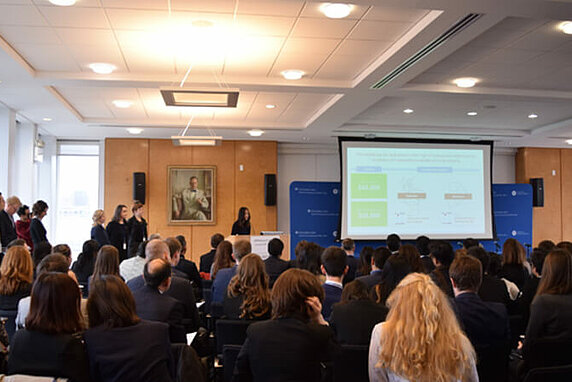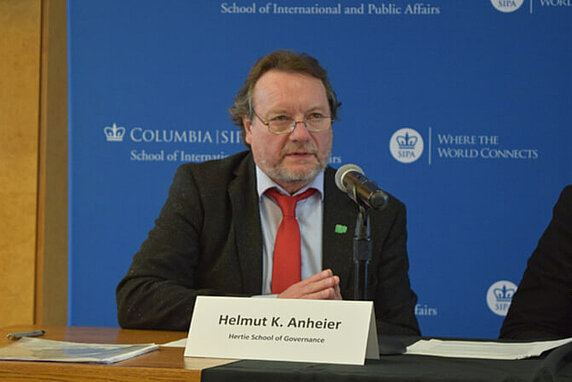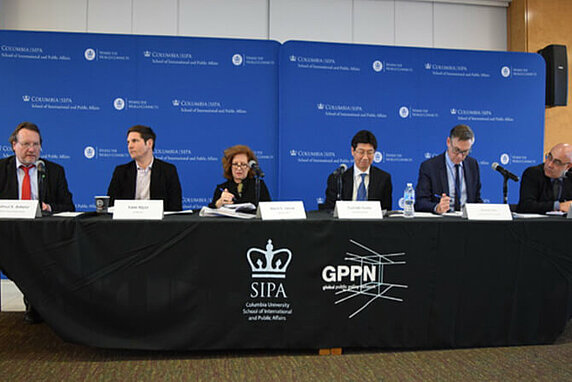Hertie School students’ solar generator made it to final round, awarded honourable mention.
Hertie School students demonstrated their innovative abilities at the annual GPPN conference in New York on 23-24 February, in a competition of ideas for meeting the United Nations’ Sustainable Development Goals (SDGs). One of six Hertie School teams was awarded an honourable mention for its solar energy generator called Suncrafter, after two teams made it to the final round out of 36 teams in total.
The rotating conference took place this year at Columbia University’s School of International and Public Affairs, and featured a keynote speech by University Professor and Director of Columbia’s Center for Sustainable Development at the Earth Institute, Jeffrey Sachs.
Teams presented concrete, innovative ideas, choosing among a set of SDGs designated by the GPPN schools. These included: good health and well-being; affordable and clean energy; sustainable cities and communities; responsible consumption and production; climate action; peace, justice and strong institutions.
Suncrafter, a project by Hertie School duo Lisa Wendzich and Maximilian Römer was one of six top finalists selected. Their project deploys re-engineered, used solar panels in disaster zones, refugee camps and developing regions, offering access to clean and affordable energy to poor and dislocated populations.
*Photos courtesy of Columbia SIPA Office of Student Affairs
Attending the conference “was very motivating for further work on sustainable development solutions,” said Römer, who is a first-year MPP student. “You see what possibilities there are – for example, there was a team from Tokyo with a blockchain project who liked our idea and approached us about possibly teaming up in the future.” Römer also said feedback from the judges was very useful, as well as the experience of pitching an idea. “We had just three minutes, so that was great training for how to present something clearly and convincingly.”
In total, 19 Hertie School students attended, along with President Helmut K. Anheier. The second team that made it to the final round was a project aimed at addressing the SDG of ensuring healthy lives and promoting well-being, designed by Master of Public Policy students Sofia Diogo Mateus and Irene Laochaisri, and Master of International Affairs students Vanessa Guinan-Bank and Pernilla Söderberg. Via an app, the students aim to leverage the medical infrastructure in middle income countries to support mothers suffering from postpartum depression.
The Global Public Policy Network is a partnership between 7 prestigious universities in public policy: the Hertie School, The School of International and Public Affairs (SIPA) at Columbia University, the London School of Economics and Political Science, School of Public Affairs at Sciences Po Lee Kuan Yew School of Public Policy at the National University of Singapore, the Brazil and the Graduate School of Public Policy at the University of Tokyo.







